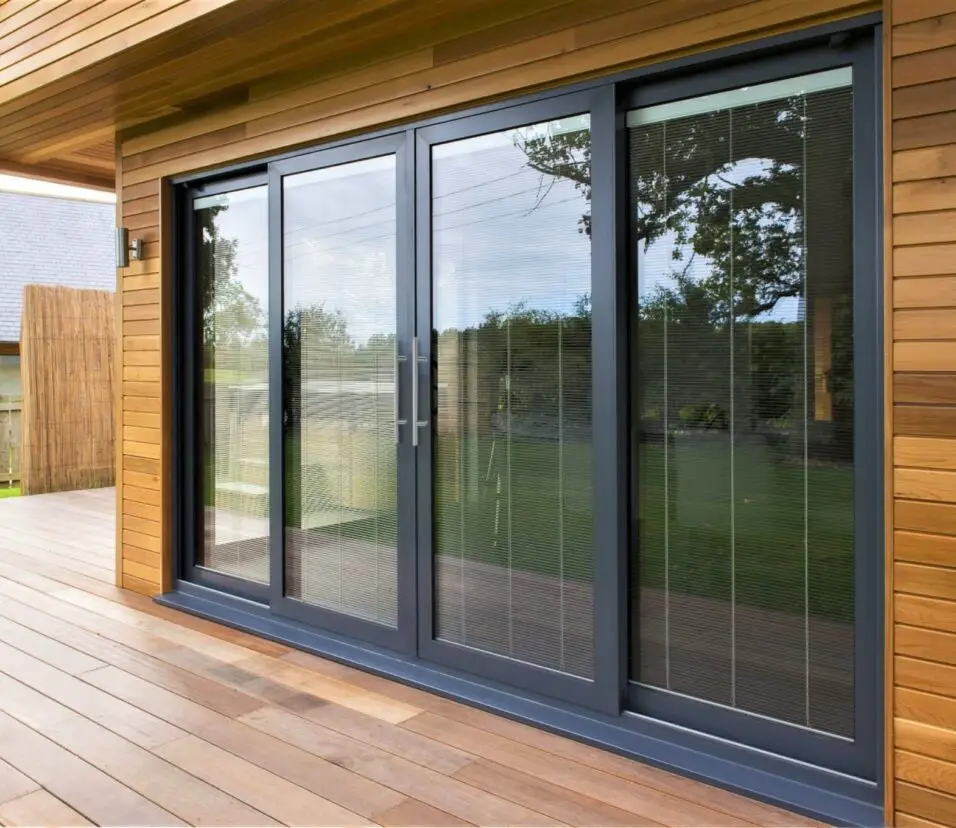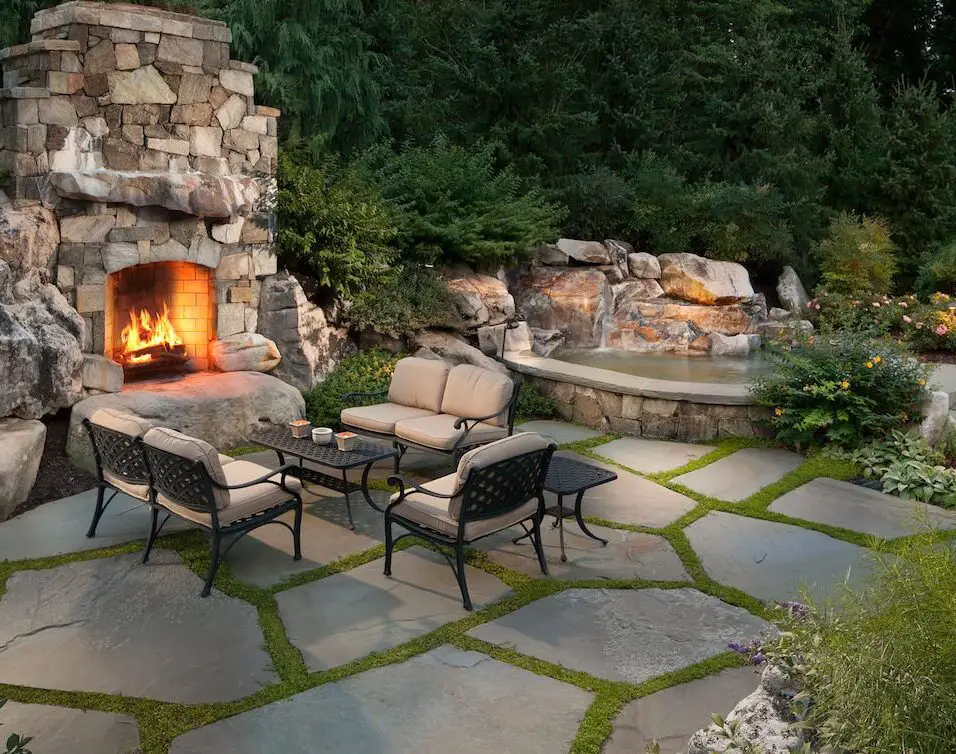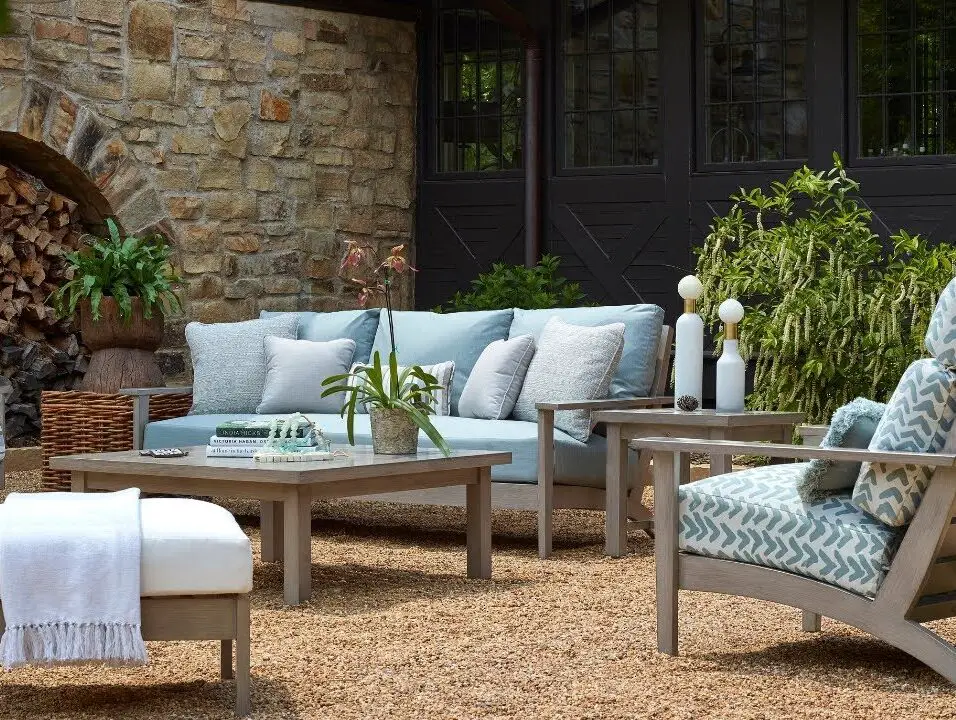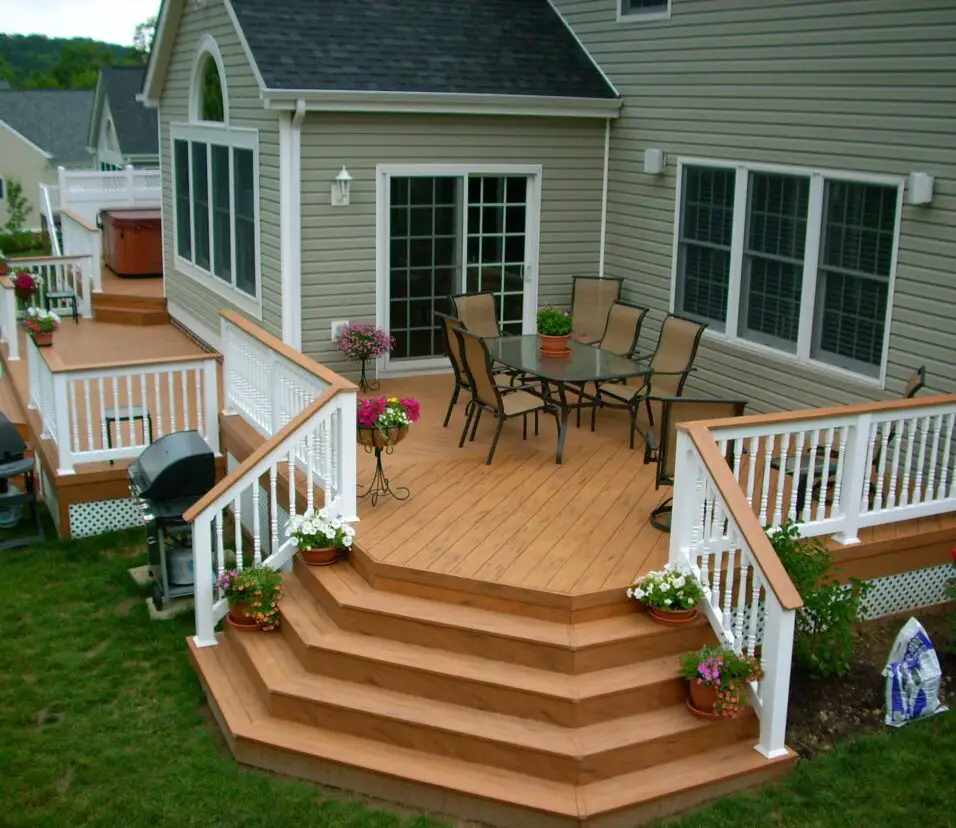How To Clean Patio Cushions With Mildew
Introduction
How To Clean Patio Cushions With Mildew: Mildew, a type of fungus, thrives in damp and humid environments, making patio cushions an ideal target, especially during the rainy seasons. Not only does mildew mar the aesthetics of your outdoor seating, but it can also contribute to unpleasant odors and pose potential health risks. Armed with the right cleaning supplies, proper techniques, and a dash of determination, you’ll be amazed at the transformation you can achieve. So, roll up your sleeves, and let’s embark on this cleaning journey together, ensuring your patio remains a haven of comfort and beauty for you, your family, and your guests to enjoy year-round!
However, fret not, for in this step-by-step introduction, we will unveil the secrets to fix cracks removing mildew and restoring your patio cushions to their former glory. Whether your cushions are made of fabric, vinyl, or canvas, the following techniques and tips will equip you with the knowledge to combat mildew growth and leave your outdoor oasis looking fresh, clean, and inviting once again.
Before you give in to the temptation of discarding your seemingly ruined cushions, take a deep breath and delve into this guide. In the sections to follow, we’ll explore the various cleaning methods depending on the type of cushion material you have. From gentle homemade remedies to effective commercial products, we’ve got you covered. Additionally, we’ll discuss essential precautions to protect your cushions from future mildew infestations and share some maintenance tips to extend their lifespan.

Should I clean my patio cushions with baking soda or vinegar?
Either, actually. Both baking soda and white vinegar are effective, natural cleansers that can be used to kill even mold and mildew.
Cushion Material: Before deciding on a cleaning method, consider the material of your patio cushions. Baking soda is generally safe for use on most cushion materials, including fabric, vinyl, and canvas, due to its gentle nature. On the other hand, vinegar’s acidic properties may not be suitable for certain materials, such as sensitive fabrics or materials with protective coatings.
Severity of Mildew: If the mildew infestation on your cushions is minimal and you’re mainly dealing with surface stains, baking soda can be an excellent first-line cleaning option. However, if the mildew has penetrated deeper into the fibers or foam of the cushions, vinegar’s disinfecting properties may be more effective in eradicating the mold spores.
Odor Removal: If your patio cushions have developed unpleasant odors due to mildew or other factors, baking soda’s deodorizing abilities can help neutralize these smells effectively.
Combining Both Methods: In some cases, you may find that a combination of baking soda and vinegar works best for your cleaning needs. Starting with a layer of baking soda to gently scrub and lift surface stains, followed by a vinegar and water solution to disinfect and kill mold spores, can be a potent approach for heavily affected cushions.
Can I spray vinegar and water on my couch cushions?
For fabric upholstery: Mix 1/4 cup vinegar, 3/4 warm water and 1 tablespoon of dish soap or Castile soap. Put in a spray bottle. Mist the soiled area. Scrub with a soft cloth until the stain lifts.
Check the Cushion Material: Before applying vinegar and water, check the care label or manufacturer’s instructions for your couch cushions. Some materials, such as leather or silk, may be sensitive to vinegar and can get damaged or discolored. In such cases, it’s best to use a milder cleaning method suitable for the specific material.
Spot Test: Always perform a spot test on a small, inconspicuous area of the cushion before spraying vinegar and water on the entire surface. This will help you ensure that the solution doesn’t cause any adverse effects or discoloration.
Dilute the Vinegar: If the spot test is successful and your cushion material can tolerate vinegar, mix equal parts of white vinegar and water in a spray bottle. The diluted solution is gentler and safer for most materials.
Spray and Blot: Spray the vinegar and water solution lightly onto the stained or soiled areas of the couch cushion. Avoid soaking the cushion with the solution. After spraying, use a clean, soft cloth or sponge to blot and gently clean the area. Avoid scrubbing too vigorously, as it may damage the fabric.
Rinse and Dry: After cleaning with the vinegar and water solution, use a separate clean cloth dampened with plain water to rinse the treated areas. Then, blot the cushions with a dry cloth to remove excess moisture. Allow the cushions to air dry completely before using them again.
What is the best product to remove mildew from outdoor cushions?
We recommend a solution of vinegar and water to clean mould off outdoor cushions made of fabric.
Mildew Stain Remover
Mildew stain removers are specifically designed to target and eliminate mildew stains on various surfaces, including outdoor cushions. Look for products that contain powerful mildew-fighting ingredients, such as hydrogen peroxide or sodium hypochlorite. These stain removers are usually available in spray or liquid forms, making them convenient to apply and rinse off.
Oxygen Bleach
Oxygen bleach, also known as oxygen-based cleaner, is a chlorine-free alternative to traditional chlorine bleach. It is highly effective at removing mildew stains and brightening outdoor cushions without causing damage to the fabric. Oxygen bleach is safer for the environment and can be used on most cushion materials, including fabric and canvas.
Vinegar Solution
White distilled vinegar is a natural and versatile cleaner that can effectively kill mold and mildew spores. Mix equal parts of white vinegar and water in a spray bottle and apply it to the mildew-affected areas of the cushions. Allow the solution to sit for a few minutes before gently scrubbing and rinsing with water.
Baking Soda
Baking soda is an excellent natural cleaner that can help lift mildew stains and deodorize outdoor cushions. Sprinkle a generous amount of baking soda on the mildew spots, dampen the area slightly, and gently scrub with a soft brush or sponge. Let it sit for a few minutes before rinsing off with water.
Can you use vinegar to clean outdoor cushions?
For a natural cleaning method, try using vinegar to clean outdoor cushions. Add 1/4 cup distilled white vinegar to 4 cups warm water and pour into a spray bottle. After vacuuming the surface, spray the cushions with the solution and let sit for 15 minutes. Use a soft brush to scrub any stained areas.
Prepare the Area: Remove the cushions from the outdoor furniture and place them on a clean, dry surface where you can comfortably work.
Spot Test: Before using vinegar on the entire cushion, perform a spot test on a small, inconspicuous area to ensure it doesn’t cause any discoloration or damage to the material.
Vinegar Solution: Mix equal parts of white vinegar and water in a spray bottle. This diluted solution is gentler and safer for most cushion materials.
Apply the Vinegar Solution: Lightly spray the vinegar and water solution onto the mildew-affected or stained areas of the outdoor cushions. Avoid soaking the cushions; a light misting is sufficient.
Let It Sit: Allow the vinegar solution to sit on the cushions for a few minutes. This gives the vinegar time to break down stains and kill mold or mildew spores effectively.
Gently Scrub: After letting the vinegar solution sit, use a soft brush or sponge to gently scrub the affected areas. Be cautious not to scrub too vigorously, especially if your cushions have delicate fabric.
Rinse Thoroughly: Rinse the cushions thoroughly with clean water to remove any vinegar residue and ensure there are no lingering odors.
Can you remove mildew from cushions?
In a large bowl, mix one tablespoon of dish soap with three cups of warm water by stirring. Soak a sponge in the mixture before scrubbing the cushions on both sides with it. Rinse the cushions with a damp, clean cloth. Let the cushions air out and dry in a sunny spot.
Brush Off Debris: Use a soft-bristled brush to remove loose dirt, debris, and any visible mildew on the surface of the cushions.
Sunlight Exposure: Place the cushions in direct sunlight for several hours. Sunlight can help kill mildew spores and inhibit their growth. Make sure to turn the cushions over to ensure both sides are exposed to the sun.
Vinegar Solution: Mix equal parts of white vinegar and water in a spray bottle. Spray the solution onto the mildew-affected areas and let it sit for a few minutes before scrubbing gently with a soft brush or sponge. Rinse thoroughly with water.
Baking Soda: Sprinkle baking soda over the mildew spots, dampen the area slightly, and gently scrub with a soft brush or sponge. Allow it to sit for a few minutes before rinsing with water.
Commercial Mildew Remover: Look for a commercial mildew remover specifically designed for use on fabrics or cushion materials. Follow the manufacturer’s instructions for best results.
Apply the chosen cleaning solution to the affected areas, and depending on the severity of the mildew, you may need to repeat the process. Gently scrub the cushions to lift and remove the mildew stains and rinse thoroughly with water.

What soap to use to clean outdoor cushions?
Mild dish soap
Mix Cleaning Solution
Toner from Spekless Cleaning recommends gentle soap and water for vinyl or plastic cushions. Add a tablespoon of Dawn dish soap per gallon of water to a bucket.
Dish soap, a mild cleaner, can remove dirt, stains, and grime from outdoor furniture. Choose a dish soap without harsh chemicals or additions.
Machine-washable outdoor cushion covers can be washed with moderate liquid laundry detergent. Make sure it’s bleach- and brightener-free for sensitive materials.
Castile soap: Made from vegetable oils, castile soap cleans outdoor cushions gently and eco-friendly.
Mild hand soap: Natural, chemical-free hand soaps can clean outdoor cushions.
For persistent stains and mildew, use oxygen bleach powder.
Bleach: Chlorine bleach is too strong for most cushion materials and can cause discoloration and weakening of the fabric.
Abrasive Cleaners: Avoid using abrasive cleaners, scouring pads, or brushes with stiff bristles, as they can damage the surface of the cushions.
Ammonia: Ammonia-based cleaners can be too harsh for outdoor cushions and may cause fading or fabric damage.
How do you clean non washable outdoor cushions?
Simply mix lukewarm water, 1/2 cup dish soap (omit if you want) and a few tablespoons of white vinegar then apply this to the cushions using a soft brush. Scrub well on all sides then let the mixture sit for a little while.
Since you cannot wash the entire cushion, spot cleaning is the best approach for non-washable cushions. Address specific stains, spots, or areas of dirt using appropriate cleaning solutions.
Vacuuming
Start by vacuuming the cushions using a brush attachment or upholstery attachment. This will help remove loose dirt, dust, and debris from the surface and crevices of the cushions.
Brushing
Use a soft-bristled brush to gently remove any remaining dirt and debris from the cushions. Be gentle to avoid damaging the fabric.
Dry Cleaning Solvent
For stains or spots that do not come off with vacuuming and brushing, consider using a dry cleaning solvent. These solvents are designed to clean fabrics without the need for water. Test the solvent on a small, inconspicuous area of the cushion first to ensure it does not cause discoloration or damage.
Mild Soap Solution
Create a mild soap solution using a small amount of mild liquid soap or dish soap mixed with water. Dampen a clean cloth with the solution and gently blot the stained areas. Do not soak the cushion; use minimal moisture to avoid water damage.
How do you clean cushions without removable covers?
Use a slightly damp sponge that has been soaked with a very small amount of detergent and give your cushions a brief once over. You can then follow this by giving your cushion cover a quick spray with an air freshener product such as Febreze.
For stains or spots that do not come off with vacuuming, consider using a dry cleaning solvent. These solvents are designed to clean fabrics without the need for water. Test the solvent on a small, inconspicuous area of the cushion first to ensure it does not cause discoloration or damage.
Create a mild soap solution using a small amount of mild liquid soap or dish soap mixed with water. Dampen a clean cloth with the solution and gently blot the stained areas. Do not soak the cushion; use minimal moisture to avoid water damage.
Look for rinse-free fabric cleaners specifically designed for spot cleaning cushions. These cleaners often come in spray form and do not require rinsing, making them suitable for cleaning cushions without removable covers.
For organic stains or odors caused by mold or mildew, consider using enzyme cleaners. Enzyme cleaners are effective at breaking down and eliminating organic matter. Follow the instructions on the product and test it on a small area first.
For oil-based stains, use absorbent powders like baking soda, cornstarch, or talcum powder. Sprinkle the powder over the stained area, let it sit for a few hours or overnight to absorb the oil, then brush it away.

Conclusion
Remember that mildew can thrive in damp and humid conditions, so it’s essential to keep your patio cushions clean and dry to prevent future infestations. Regular maintenance and prompt action when you notice any signs of mildew will go a long way in preserving the beauty and comfort of your outdoor oasis. Investing in high-quality patio furniture covers can also provide an extra layer of protection against the elements.
Throughout this guide, we have explored various cleaning methods tailored to different cushion materials, such as fabric, vinyl, and canvas. Whether you opt for homemade remedies or commercial products, ensure that you follow the instructions carefully and always test any new solution on a small, inconspicuous area before treating the entire cushion. In addition to cleaning, take preventive measures such as storing your cushions in a dry and well-ventilated area during inclement weather or when not in use.
Regularly inspect your patio cushions for any signs of wear or damage, and address issues promptly to extend their lifespan. Remember, proper care not only ensures the longevity of your patio cushions but also contributes to a healthier and more inviting outdoor environment for you, your family, and your guests to enjoy. We hope this guide has been a valuable resource in your endeavor to keep your patio cushions free from mildew and looking their best. With the knowledge and techniques you’ve gained, your outdoor space will remain a haven of comfort and beauty, ready to welcome you whenever you seek solace or celebration.








